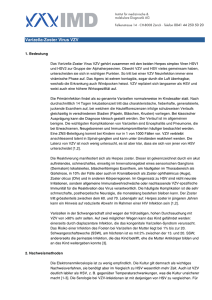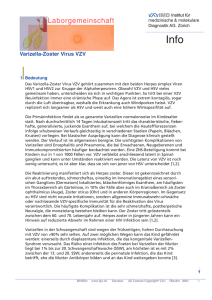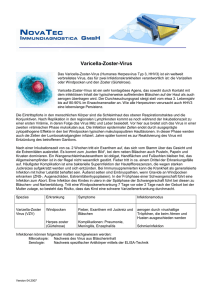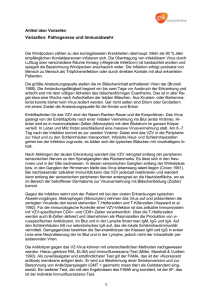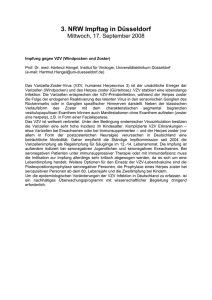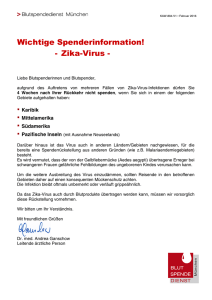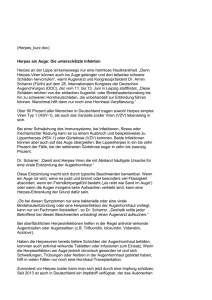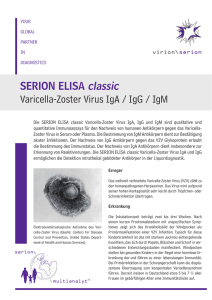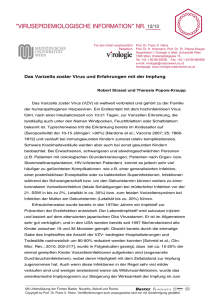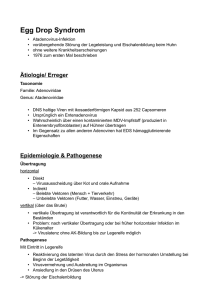Vollautomatische Diagnostik von Windpocken und
Werbung
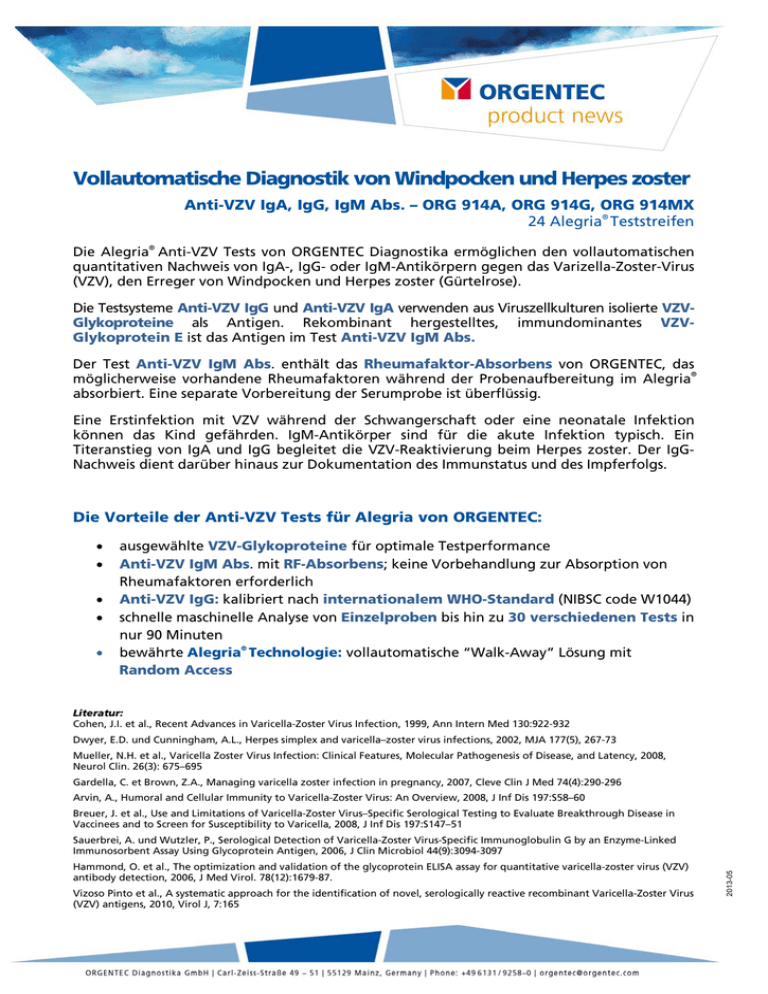
Vollautomatische Diagnostik von Windpocken und Herpes zoster Anti-VZV IgA, IgG, IgM Abs. – ORG 914A, ORG 914G, ORG 914MX 24 Alegria® Teststreifen Die Alegria® Anti-VZV Tests von ORGENTEC Diagnostika ermöglichen den vollautomatischen quantitativen Nachweis von IgA-, IgG- oder IgM-Antikörpern gegen das Varizella-Zoster-Virus (VZV), den Erreger von Windpocken und Herpes zoster (Gürtelrose). Die Testsysteme Anti-VZV IgG und Anti-VZV IgA verwenden aus Viruszellkulturen isolierte VZVGlykoproteine als Antigen. Rekombinant hergestelltes, immundominantes VZVGlykoprotein E ist das Antigen im Test Anti-VZV IgM Abs. Der Test Anti-VZV IgM Abs. enthält das Rheumafaktor-Absorbens von ORGENTEC, das möglicherweise vorhandene Rheumafaktoren während der Probenaufbereitung im Alegria® absorbiert. Eine separate Vorbereitung der Serumprobe ist überflüssig. Eine Erstinfektion mit VZV während der Schwangerschaft oder eine neonatale Infektion können das Kind gefährden. IgM-Antikörper sind für die akute Infektion typisch. Ein Titeranstieg von IgA und IgG begleitet die VZV-Reaktivierung beim Herpes zoster. Der IgGNachweis dient darüber hinaus zur Dokumentation des Immunstatus und des Impferfolgs. Die Vorteile der Anti-VZV Tests für Alegria von ORGENTEC: • • • • • ausgewählte VZV-Glykoproteine für optimale Testperformance Anti-VZV IgM Abs. mit RF-Absorbens; keine Vorbehandlung zur Absorption von Rheumafaktoren erforderlich Anti-VZV IgG: kalibriert nach internationalem WHO-Standard (NIBSC code W1044) schnelle maschinelle Analyse von Einzelproben bis hin zu 30 verschiedenen Tests in nur 90 Minuten ® bewährte Alegria Technologie: vollautomatische “Walk-Away” Lösung mit Random Access Literatur: Cohen, J.I. et al., Recent Advances in Varicella-Zoster Virus Infection, 1999, Ann Intern Med 130:922-932 Dwyer, E.D. und Cunningham, A.L., Herpes simplex and varicella–zoster virus infections, 2002, MJA 177(5), 267-73 Mueller, N.H. et al., Varicella Zoster Virus Infection: Clinical Features, Molecular Pathogenesis of Disease, and Latency, 2008, Neurol Clin. 26(3): 675–695 Gardella, C. et Brown, Z.A., Managing varicella zoster infection in pregnancy, 2007, Cleve Clin J Med 74(4):290-296 Arvin, A., Humoral and Cellular Immunity to Varicella-Zoster Virus: An Overview, 2008, J Inf Dis 197:S58–60 Breuer, J. et al., Use and Limitations of Varicella-Zoster Virus–Specific Serological Testing to Evaluate Breakthrough Disease in Vaccinees and to Screen for Susceptibility to Varicella, 2008, J Inf Dis 197:S147–51 Hammond, O. et al., The optimization and validation of the glycoprotein ELISA assay for quantitative varicella-zoster virus (VZV) antibody detection, 2006, J Med Virol. 78(12):1679-87. Vizoso Pinto et al., A systematic approach for the identification of novel, serologically reactive recombinant Varicella-Zoster Virus (VZV) antigens, 2010, Virol J, 7:165 2013-05 Sauerbrei, A. und Wutzler, P., Serological Detection of Varicella-Zoster Virus-Specific Immunoglobulin G by an Enzyme-Linked Immunosorbent Assay Using Glycoprotein Antigen, 2006, J Clin Microbiol 44(9):3094-3097
